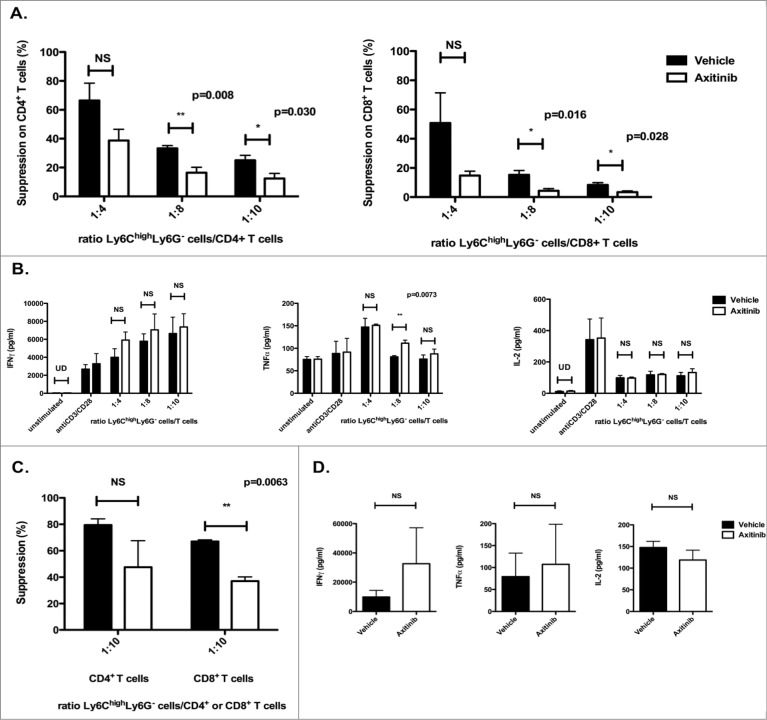Figure 6.
Axitinib reduces the suppressive capacity of tumor-infiltrating CD11b+Ly6ChighLy6G- cells. CD11b+Ly6ChighLy6G– cells were sorted from the subcutaneous and intracranial tumors of MO4-bearing mice on the 7th day of treatment with axitinib at 25 mg/kg bid or vehicle by oral gavage and were used in a suppression assay. Controls included T cells cultured in the absence of MDSCs with and without T-cell stimulation.(A–B.) Subcutaneous tumor. The suppressive capacity of CD11b+Ly6ChighLy6G- cells sorted from axitinib-treated mice (A.) was strongly reduced as compared to those sorted from vehicle-treated mice, especially on CD8+ T-cell proliferation (A. right panel) (A.) Overview of the percentage of suppression of CD4+ T-cell proliferation (left panel) and of CD8+ T-cell proliferation (right panel) cultured in the presence of different ratios of Ly6ChighLy6G– MDSC (moMDSC) (B.) IFNγ, TNFα, and IL-2production by splenocytes was determined after 3 d of co-culture with different ratios of Ly6ChighLy6G- MDSC (moMDSC). Three independent experiments were performed (4 mice per group, tumors were pooled per group before cell sorting) and results are presented as mean ± SEM. (C–D.) Intracranial tumor. The suppressive capacity of CD11b+Ly6ChighLy6G- cells sorted from axitinib-treated mice on CD8+ T cell proliferation is significantly reduced as compared to those sorted form vehicle-treated mice (C.) Overview of the percentage suppression of CD4+ T-cell proliferation (left panel) and of CD8+ T-cell proliferation (right panel) cultured in the presence of Ly6ChighLy6G- MDSC (moMDSC) at a 1:10 ratio. D. IFNγ-, TNFα, and IL-2 production by splenocytes was determined after 3 d of co-culture with Ly6ChighLy6G- MDSC (moMDSC) at a 1:10 ratio. Two independent experiments were performed (4 mice per group, tumors were pooled per group before cell sorting) and results are presented as mean ± SEM.

